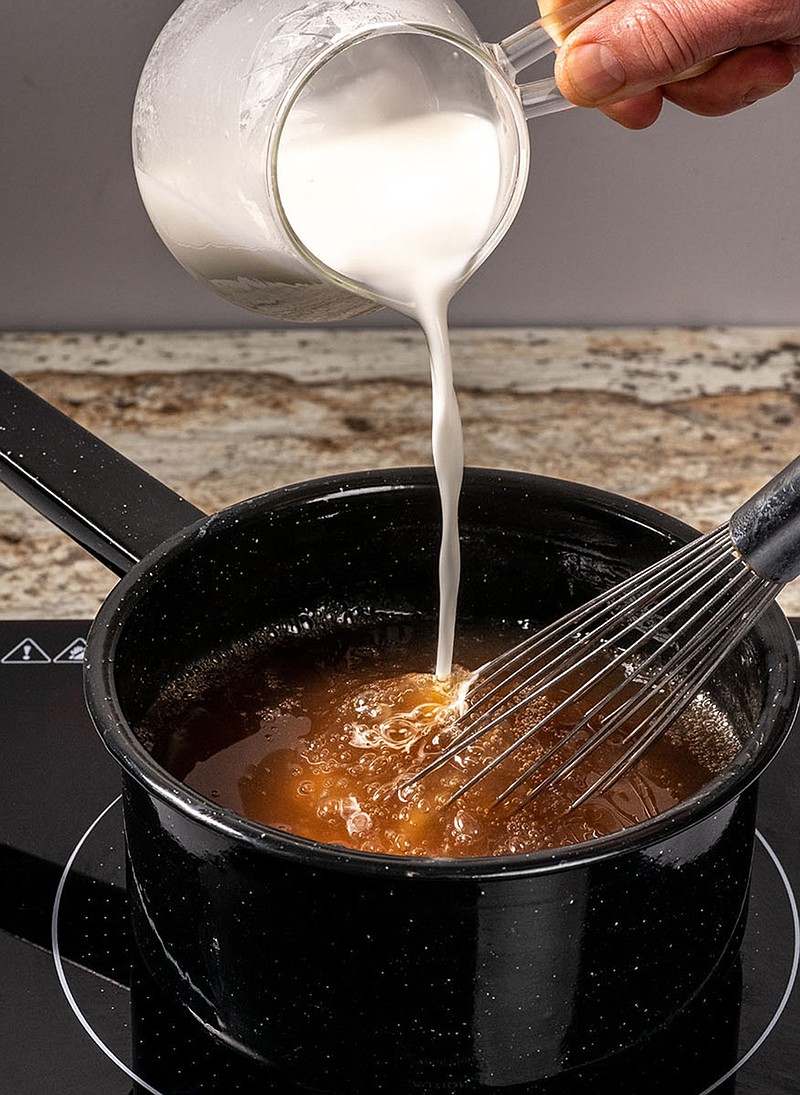We've all been there. There being left with a thin, watery sauce when instead we're in want of one that is thick, luscious and full of body-ody-ody. While a roux is a common thickener that we should all master for dishes such as gravy and gumbo, it is of no use once we've already reached the end of a recipe's instructions and don't want to bring out another pot.
Well, fret no more. Here is a road map with three paths for how to salvage overly thin sauces, gravies and stews.
Reduction
Too much liquid? Get rid of it with science! Let the excess liquid evaporate away by bringing the substance to a boil or a simmer until the desired consistency is reached. This method is great for sauces - including a quick pan sauce created after cooking a protein - and gravies that are only marginally looser than desired. Reduction is not best choice when you want a major change in consistency or for stews where there is risk of overcooking its components.
One note of caution is to be aware of salt, as reduction concentrates the flavors and could cause a once perfectly seasoned dish to turn too saline. Once reduced, I like to swirl in a pat or two of butter off heat to add sheen and give the sauce a velvety texture.
Beurre manie
Beurre manie is equal parts (by volume) softened butter and flour that have been mixed together to form a loose dough (of sorts). The butter coating the particles of flour prevents clumps from forming compared with adding flour by itself.
To use, whisk some of the beurre manie into the pot and simmer for a few minutes until thickened. (Time is also needed to cook off the taste of raw flour.) Exactly how much you'll need is often a bit of trial and error. To that end, start with 1 tablespoon each of butter and flour, and remember that you can always add more if needed. I tend to use this method when working with far too thin gravies and rich, hearty stews where I've probably already used some flour earlier in the cooking process but want to thicken it further.
Cornstarch slurry
Cornstarch slurries are popular in certain stir-fry recipes because they lend a glossy sheen to the sauce whereas flour will make it more cloudy. To form a slurry, mix equal parts cornstarch and water until smooth. One advantage it has over beurre manie is that it's easier to make in that you don't have to travel back in time to take butter out of the fridge to let it soften. While you can also make a slurry with flour, there are certain differences between the two starches that one must take into consideration.
The first is that cornstarch is gluten free, making it the obvious choice for anyone with such dietary restrictions. Compared with flour, cornstarch has a higher gelatinization temperature, meaning that it requires a higher heat to start thickening.
To use, bring to a boil for maximum thickening power and cook for only a minute or two as prolonged heat can cause the starch to break down and thin out the sauce again.
Another thing to note is that cornstarch has twice the thickening power of flour, meaning that you only need 1 tablespoon of cornstarch to get the same results as 2 tablespoons of flour, but it also doesn't work as well with very acidic liquids, such as tomato sauces.

